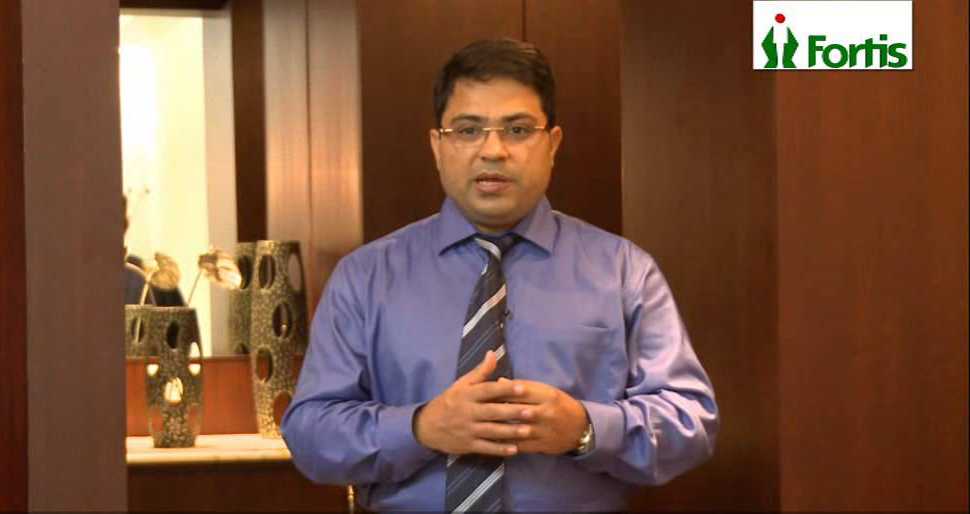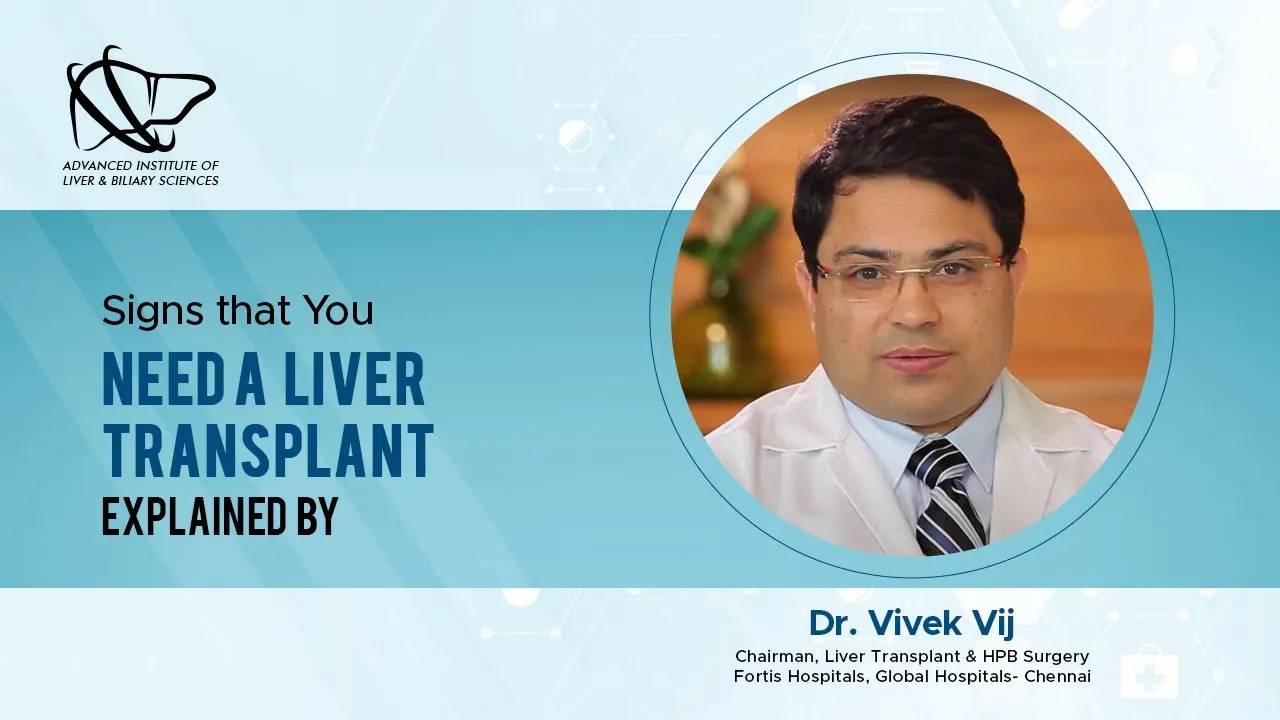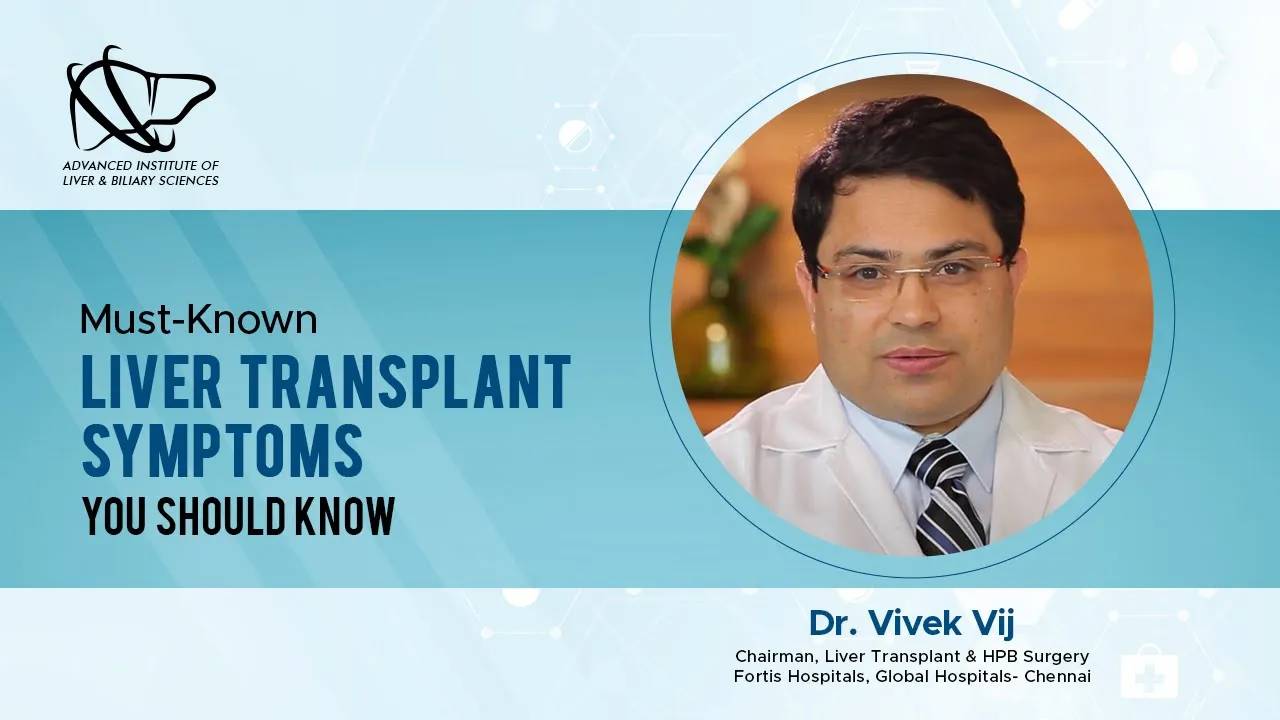Muqhdad Hamid Hasan, a forty-one-year-old man suffering from a PSC liver disease, found a new lease on life at AILBS India under the exclusive care of Dr. Vivek Vij.
Let’s know more about Muqhdad Hamid Hasan’s experience with AILBS India and how Dr. Vivek Vij helped him recover from liver disease.
Muqhdad Hamid Hasan, a 41-year-old man from Iraq, had PSC liver disease (Primary sclerosing cholangitis), in which his bile ducts become inflamed and scarred, eventually leading to cancer. Even a short walk made him uneasy and exhausted; he felt dizzy and heavy-headed and was unable to move much.
Muqhdad Hamid Hasan was diagnosed with PSC liver disease in Iraq, and his doctor advised him to get a liver transplant as soon as possible. Because Iraq lacked adequate medical facilities, he travelled to India for treatment.
After PSC liver disease test Dr. Vivek Vij said Muqhdad Hamid Hasan’s status was exceedingly delicate; he had been on continuous medication for months to stabilise his condition before transplantation. His complexion had turned yellow from jaundice, and water filled his stomach (ascites), leading to infection. His kidneys were also having issues while he was working.
Hamid required an extremely advanced and complicated procedure with high risk; the chances of a successful liver transplant were only about 60%.
Dr. Vivek Vij (Director of Liver Transplant and Gastrointestinal Surgery) and his expert team, the top liver transplant surgeon in Noida, successfully performed liver transplant surgeries to cure PSC liver disease.
Muqhdad Hamid Hasan thanked the team, particularly Dr. Vivek Vij, for carrying out the PSC liver disease treatment without causing him any major discomfort.
Jaid Hamid Husain, Muqhdad Hamid Hasan’s brother, is a brave man who travelled from Iraq to India to find the best medical facilities for his brother. Jaid Hamid Husain also donated a portion of his liver to Muqhdad Hamid Hasan for the liver transplant.
Muqhdad Hamid Hasan was finally discharged in a very healthy state and was able to walk alone after a successful 8-hour PSC liver disease treatment operation. His appetite resurged, he gained weight, and his face was clear, which was a success for Dr. Vivek Vij.
Primary sclerosing cholangitis is a slow-progressing disease. It can eventually lead to liver failure, recurring infections, and bile duct or liver tumours. The primary sclerosing cholangitis treatment is a liver transplant.
Primary sclerosing cholangitis (PSC) is a rare chronic liver disease affecting the biliary duct. Your bile ducts become scarred as a result of PSC. They gradually constrict until bile backs up into your liver and begins to harm it.
Bile is an essential digestive liquid required for fat breakdown. It is also required to absorb the fat-soluble vitamins A, D, E, and K. Bile is produced in your liver and passes through ducts to your gallbladder and small intestine. PSC causes bile duct damage both inside and outside of your liver.
When a simple blood test or an X-ray for an unrelated ailment reveals liver abnormalities, primary sclerosing cholangitis is commonly detected. A PSC liver disease test is required to determine the stage of PSC liver disease.
Early warning signs and symptoms of primary sclerosing cholangitis frequently include:
Many patients diagnosed with primary sclerosing cholangitis continue to feel fine for several years before symptoms appear. However, there is no accurate technique to anticipate how quickly or slowly a person’s sickness will advance.
The following signs and symptoms may occur as the condition progresses:
What causes primary sclerosing cholangitis is unknown. In persons genetically susceptible to the condition, an immune system reaction to an infection or toxin may cause it to manifest. Many persons with primary sclerosing cholangitis also have inflammatory bowel disease, which leads to chronic liver disease.
However, primary sclerosing cholangitis and inflammatory bowel disease may not always coexist. Primary sclerosing cholangitis can exist for years before inflammatory bowel disease develops. If primary sclerosing cholangitis is found, it is critical to rule out inflammatory bowel disease since it increases the risk of colon cancer.
People treated for inflammatory bowel disease are more likely to have primary sclerosing cholangitis. People with primary sclerosing cholangitis rarely develop inflammatory bowel disease until they have a liver transplant.
The following PSC liver disease test and methods are used to diagnose primary sclerosing cholangitis:
A blood test to assess your liver function, including levels of liver enzymes, can provide your doctor with information regarding your diagnosis.
An MRI of your bile ducts is recommended. Magnetic resonance imaging Cholangiopancreatography is the gold standard for diagnosing primary sclerosing cholangitis. It employs magnetic resonance imaging (MRI) to create images of your liver and bile ducts.
Endoscopic retrograde cholangiopancreatography (ERCP), a form of bile duct X-ray, may be required in addition to or instead of an MRI. However, this test is rarely utilised for diagnosis due to the danger of consequences.
Your doctor will use a flexible tube passed down your throat to inject dye into the area of your small intestine where your bile ducts are empty to make your bile ducts visible on an X-ray.
An ERCP is the test of choice if indications and symptoms persist despite no abnormalities on an MRI. If you cannot undergo an MRI due to a metal implant in your body, an ERCP is frequently the first diagnostic test.
A liver biopsy is a surgical operation that involves removing a portion of liver tissue for laboratory examination. Your doctor inserts a needle through your skin and into your liver to obtain a tissue sample.
A liver biopsy can assist in identifying the amount of your liver’s damage. This test is utilised only when the diagnosis of primary sclerosing cholangitis remains questionable following less invasive testing.
Primary sclerosing cholangitis treatment focuses on controlling complications and monitoring liver damage after undergoing PSC liver disease testing. Many treatments have been examined in patients with primary sclerosing cholangitis, but none have been shown to halt or reverse the liver damage caused by this illness.
Bacterial infections are common when bile backs up in restricted or obstructed ducts. People with primary sclerosing cholangitis may need to take antibiotics repeatedly or for an extended period of time to prevent and treat these infections. Antibiotics must be taken before any procedure resulting in an infection, such as an endoscopic procedure or abdominal surgery.
Because of primary sclerosing cholangitis, your body has difficulty absorbing certain vitamins. Even if you consume a healthy diet, you may not obtain all the necessary nutrients.
Your doctor may advise you to take vitamin supplements as tablets or as an infusion through a vein in your arm. You can supplement with calcium and vitamin D if the condition damages your bones.
Blockages in your bile ducts might be caused by disease progression or be a symptom of bile duct cancer. Endoscopic retrograde cholangiopancreatography (ERCP) can assist in determining the reason, and bile duct obstruction can be treated with:
The only known treatment for primary sclerosing cholangitis is a liver transplant. Surgeons remove your sick liver and replace it with a healthy liver from a donor during a liver transplant.
People with liver failure or other serious consequences of primary sclerosing cholangitis are eligible for a Liver Transplant in India. Although rare, primary sclerosing cholangitis might reoccur following a liver transplant.
To summarise, PSC liver disease is a chronic liver condition that can lead to cancer, liver failure, and other major health problems. Depending on how serious it is, it may be curable with a bile duct procedure and medicines if caught early enough, but a liver transplant may be required if it has already harmed your organs.
To avoid PSC liver disease, you must take care of yourself and stay away from viruses and infections. Eat nutritiously and avoid junk food so your liver can readily process it.
Your doctor will perform psc liver tests to assess your exact type of PSC liver disease and give a treatment plan to manage your disease best. People with PSC liver disease must follow their doctor’s treatment plan and have routine clinical assessments.
If you are experiencing symptoms of primary sclerosing cholangitis or wish to seek expert help, look no further than AILBS India. It is India’s best liver transplant hospital. Dr. Vivek Vij is best Liver Transplant Surgeon in india, and he is known for providing appropriate treatment after assessing the patient’s condition.


